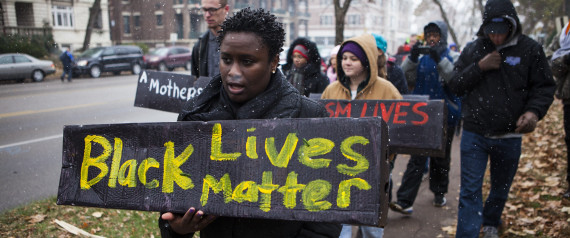Our blog posts almost always use the past tense and include what worked and what did not. But I’m putting this up immediately in the hopes that it may inspire you to seize the moment in your own way. It’s rushed and surely flawed, but time is important here. Hopefully this is of use.

I will begin by asking the students what historians could contribute to conversations about Ferguson. I know I will need to quickly follow this up by saying that certain topics would probably be better left for other classes. For example, I will leave the details of the investigation to criminology classes and the details of the court case to political science or pre-law classes. I’m not interested in discussing the minute details of this case. Instead, let’s use this as a chance to look back over the semester and think how historical memory is shaping the way Americans are discussing Ferguson.
Through a series of questions, I’d like the students to list the long history of race and the law from 1865 to present. Along the way my students should be able to recall the Black Codes, legalized lynchings, the “riots” of 1919, the Scottsboro boys, Emmett Till, Bull Connor, the urban violence of the late 60s and early 70s and the discourse of Law and Order that resulted. Throughout, we will explore the varied responses to racial injustice, ranging from protests, political organizing, to rioting. The discussions of these responses should help us contextualize the responses to the killing of Michael Brown. I had a highly synthetic lecture planned that touched on a host of themes coming out of the 1990s, but instead I plan to focus on what I see as a root cause of the tragedy in Ferguson: The politics of mass incarceration. I drew heavily from Michelle’s Alexander, The New Jim Crow: Mass Incarceration in an Age of Colorblindness and Marie Gottschalk’s The Prison and the Gallows: The Politics of Mass Incarceration in America.
We have already built a foundation through discussions of Nixon’s law and order language in 1968 and racial discourse in the 1980s. I will show my students George H.W. Bush’s 1988 Willie Horton ad, and then ask the students to reflect on both the ad and the role of media in contemporary politics of mass incarceration. We’ve been talking about media a lot of this semester, and the students previously wrote mini research papers on the Great Depression through radio and Vietnam and/or the civil rights movement through television. I’d like to again explore the decisions that media gatekeepers have to make on a daily basis and unpack the phrase, “if it bleeds it leads.” This should open a conversation about how the media has covered and continues to cover Ferguson protests, particularly the obsession with rioting. I plan to leave it up to my students to determine the consequences of a public terrified of crime, particularly crime committed by black men.
My students like to divide history into heroes and villains. I work hard to resist this binary and instead work at the way in which injustice works through institutions as much as individuals. Seeking to understand and measure institutional privilege seems to be a better way of analyzing the workings of injustice both past and present. So I’d like to transition our conversation to how fear and privilege work together to foster injustice all the while making it invisible to most. If we can get to this place of understanding, it should help us to better empathize with the anger and despair expressed last night.
If nothing else, I want my students to understand that the death of Michael Brown is about more than the death of one teenage boy. It’s a product of a long and horrifying history that is still very much with us. I also cannot resist encouraging my students to recognize Michael Brown and Darren Wilson as symbols of a culture of fear and privilege that continues to shatter lives.



